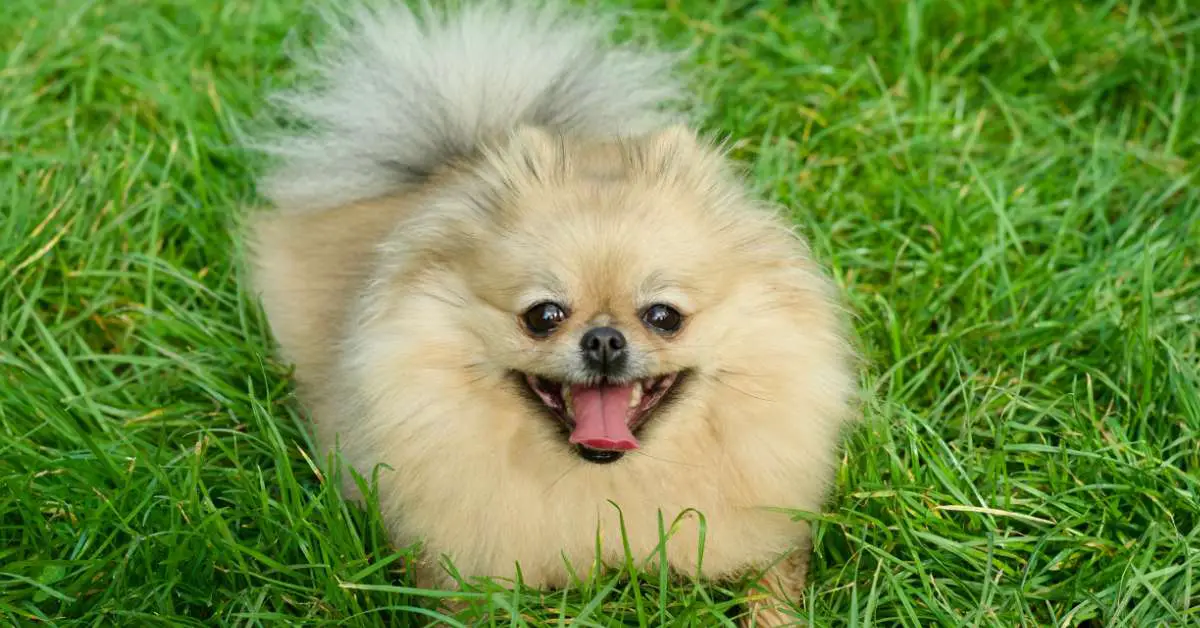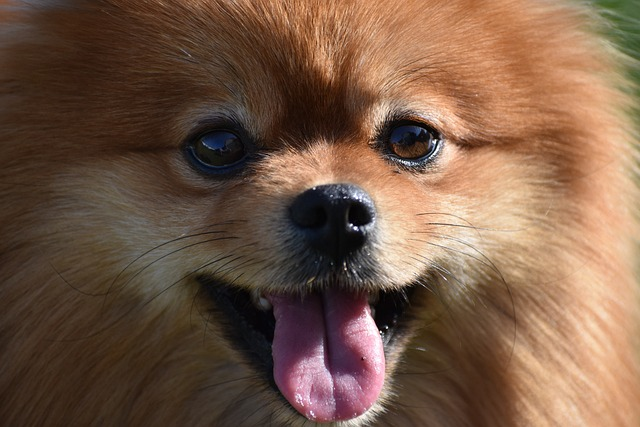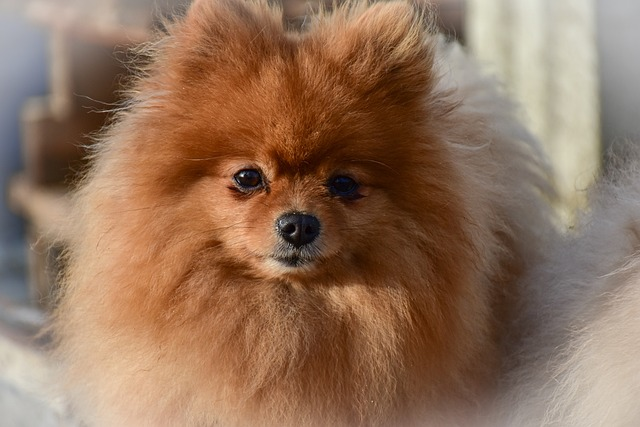Do Pomeranians Shed? Unveiling the Truth and Best Grooming Tips!

Pomeranians often emerge as the preferred option for a perfect furry friend, thanks to their enchanting appearance and spirited personalities.
However, the question of shedding can be a major concern for potential dog owners.
Are Pomeranians shedding machines or relatively low-maintenance when it comes to fur?
The answer lies somewhere in between, and in this blog post (do Pomeranians shed), we’re here to demystify the shedding tendencies of these pint-sized pups.
Pomeranians, renowned for their luxurious double coats and distinctive plume-like tails, have earned a reputation for being both elegant and adorable.
But behind that fluff lies the reality of shedding, a topic that triggers uncertainty in the minds of many.
Understanding a Pomeranian’s shedding patterns, causes, and ways to manage the fur fallout can make a world of difference for those considering bringing one into their homes.
So, let’s delve into the world of Pomeranian shedding and equip you with the knowledge you need to coexist harmoniously with these charming companions.
Do Pomeranians Shed? – 4 Reasons For Heavy Shedding
Pomeranians, known for their fluffy dual coats and lively dispositions, are adored companions for numerous dog enthusiasts. Nonetheless, the issue of shedding frequently sparks worries among individuals considering Pomeranians as pets.
While Pomeranians are indeed known for their shedding tendencies, it’s essential to understand the reasons behind heavy shedding before committing to bringing one into your home.
1. Double Coat Structure
Pomeranians boast a luxurious double coat consisting of a soft undercoat and a longer outer coat.
This double-layered fur serves as insulation and protection for the dog, but it also means more hair to shed.
Seasonal shedding occurs as Pomeranians adapt to temperature changes, often leading to a heavier shed during the transition between seasons.
2. Genetics
Shedding tendencies are influenced by genetics. If your Pomeranian’s parents had heavy shedding patterns, there’s a higher chance that your pup will follow suit.
Responsible breeding practices can impact shedding to some extent, but be prepared for some level of fur regardless.
3. Health and Nutrition
A Pomeranian’s overall health directly affects shedding. A balanced diet rich in essential nutrients contributes to a healthier coat and skin, minimizing excessive shedding.
Conversely, poor nutrition or allergies can lead to increased shedding and skin issues.
4. Stress and Anxiety
Believe it or not, a Pomeranian’s emotional well-being plays a role in shedding. Stress and anxiety can trigger excessive shedding as a physiological response.
Changes in the environment, routine, or even emotional distress can lead to more fur on your furniture.
While heavy shedding is a part of Pomeranian ownership, it’s not an insurmountable challenge.
Regular grooming practices, such as brushing sessions to remove loose hair and promote healthy coat oils, can significantly reduce the fur spread around your home.
Consulting with a veterinarian for dietary advice and addressing potential stressors can also help manage shedding.

How Much Do Pomeranian Dogs Shed?
Pomeranian dogs are known to shed a moderate to high amount of fur throughout the year.
Their shedding can be influenced by various factors, including genetics, health, coat care, and environmental conditions.
Pomeranians have a double coat, consisting of a soft, dense undercoat and a longer, harsher outer coat.
This coat helps them adapt to different temperatures and provides protection, but it also means that they shed more compared to dogs with a single coat.
Seasonal shedding is common among Pomeranians, with heavier shedding occurring during the spring and fall as they transition between their winter and summer coats.
During these periods, you might notice an increase in shedding as the undercoat is shed to make way for the new coat.
Regular grooming is essential to manage Pomeranian shedding. Brushing your Pomeranian’s coat a few times a week helps remove loose hair, prevent matting, and distribute natural oils that promote coat health.
While shedding cannot be eliminated entirely, proper grooming can significantly reduce the amount of loose fur that ends up around your home.
It’s important to note that individual Pomeranians may have varying shedding levels. Some Pomeranians might shed more due to genetics, health issues, or other factors, while others might shed less.
If you’re concerned about shedding, it’s a good idea to consult with a veterinarian or a professional groomer for personalized advice on managing your Pomeranian’s coat.
Pomeranian’s seasonal shedding
Pomeranians, renowned for their vibrant personalities and luxurious coats, undergo a natural shedding process that is closely tied to the changing seasons.
Seasonal shedding is a normal phenomenon for many dog breeds, including Pomeranians, as they adapt to variations in temperature and daylight.
Let’s delve into the fascinating world of Pomeranian’s seasonal shedding and how to manage it effectively.
The Science Behind Seasonal Shedding:
Pomeranians possess a coat comprised of an insulating undercoat and a longer protective outer coat.
As the seasons shift, their bodies respond to environmental cues, triggering changes in their fur to accommodate temperature fluctuations.
The transition between warm and cold weather prompts a shedding process that helps Pomeranians prepare for the upcoming season.
Spring Shedding
As winter gives way to spring, Pomeranians shed their thick winter undercoat to make way for a lighter, cooler summer coat.
This shedding is often more noticeable during spring, as the fluffy undercoat is shed in abundance.
Regular brushing during this time helps remove the excess fur, preventing matting and allowing the new coat to grow properly.
Fall Shedding
Conversely, as the days grow shorter and temperatures drop in preparation for winter, Pomeranians shed their summer coat to regrow their dense winter undercoat.
This fall shedding season can also be significant, though it might not be as heavy as the spring shed.
Again, routine grooming is essential to manage the shedding process and keep your Pomeranian comfortable.
Managing Seasonal Shedding:
- Frequent Brushing: Increase grooming sessions during spring and fall to help remove loose fur. Regular brushing not only reduces shedding but also promotes healthy skin and coat.
- Balanced Diet: Ensure your Pomeranian is receiving proper nutrition, as a healthy coat starts from the inside. Consult your veterinarian for dietary recommendations.
- Hydration: Adequate hydration supports overall coat health and skin condition.
- Professional Grooming: If the shedding becomes overwhelming, consider professional grooming to help manage the fur and keep your Pomeranian looking their best.
- Patience: Remember that seasonal shedding is a natural process, and some level of fur around your home is inevitable. Patience and understanding go a long way in navigating this aspect of Pomeranian ownership.
However, Pomeranian’s seasonal shedding is a biological response to the changing seasons and temperature variations.
While it might result in a temporary increase in the fur around your home, proactive grooming and care can significantly mitigate its impact.
Embrace the natural cycle of shedding, and enjoy the company of your charming Pomeranian throughout the year.
Dealing With Pomeranians Shedding
Pomeranians, with their charming personalities and fluffy coats, are delightful companions. However, the reality of shedding can sometimes be a challenge for their owners.
While you can’t completely eliminate shedding, there are effective strategies to manage and minimize the fur fallout in your home.
1. Regular Grooming:
Consistent grooming is key to controlling Pomeranian shedding.
Brush your pom’s coat at least a few times a week using a suitable brush or comb.
This helps remove loose hair, prevents matting, and distributes natural oils, keeping the coat healthier and shedding more manageable.
2. Bathing and Conditioning:
Regular baths can help keep shedding in check by removing excess hair and promoting skin health.
Use a gentle dog shampoo and conditioner to maintain a clean and well-maintained coat.
Remember not to over-bathe, as it can lead to skin dryness and potentially increase shedding.
3. Healthy Diet:
A nutritious diet rich in essential nutrients, including omega-3 fatty acids, can positively influence coat health and reduce excessive shedding.
Consult your veterinarian for recommendations on the best diet for your Pomeranian’s specific needs.
4. Stay Hydrated:
Proper hydration contributes to healthy skin and coat. Ensure your Pomeranian has access to fresh water at all times.
5. Stress Management:
Minimize stress and anxiety in your Pomeranian’s life, as emotional distress can lead to increased shedding.
Maintain a consistent routine, provide mental stimulation, and create a calm environment.
6. Regular Veterinary Check-ups:
Health issues can contribute to excessive shedding.
Regular visits to the veterinarian can help identify any underlying problems that might be causing increased shedding.
7. Invest in Lint Rollers and Vacuuming:
Be prepared with lint rollers and a good-quality vacuum cleaner to tackle stray hairs on furniture and floors.
8. Seasonal Shedding:
Prepare for the heavier shedding that occurs during seasonal transitions.
Increase grooming sessions during these times to help manage the shedding process.
9. Professional Grooming:
Consider occasional professional grooming to get rid of excess hair and maintain the coat’s health and appearance.
10. Patience and Acceptance:
Remember that shedding is a natural process for most dogs, including Pomeranians.
Patience and acceptance are essential as you navigate life with your fluffy companion.
Moreover, managing Pomeranian shedding requires a combination of regular grooming, proper nutrition, stress management, and a proactive approach to coat care.
By implementing these strategies, you can enjoy the companionship of your Pomeranian while keeping your home relatively fur-free.
FAQs
1. During Pomeranian Molting How Much Fur is Lost?
During molting, Pomeranians can lose a significant amount of fur, especially their dense undercoat.
The exact amount varies, but you might notice clumps of fur coming off during this shedding phase.
Regular grooming and brushing can help manage the shedding and keep your Pomeranian’s coat healthy.
2. How Much Do Pomeranians Shed? What to Expect
Pomeranians are moderate to heavy shedders, particularly during seasonal transitions.
They have a thick coat that sheds to adapt to changing temperatures. Daily brushing can help control loose fur and minimize shedding around your home.
3. Do Dogs Shed All the Time?
Most dogs, including Pomeranians, have natural shedding cycles influenced by factors like breed, health, and environment.
Dogs typically shed year-round but may shed more noticeably during seasonal changes. Regular grooming and a healthy diet can impact the amount of shedding.
4. Best Products for Pomeranian Care?
a) Gentle Slicker Brush: Ideal for daily brushing to remove tangles and loose fur.
b) High-Quality Dog Shampoo and Conditioner: Essential for maintaining coat health and managing shedding.
c) Omega-3 Fatty Acid Supplements: Promote a healthy coat and skin.
d) Deshedding Tool: Effective for managing heavy shedding during molting periods.
Remember, individual shedding levels vary, and understanding your Pomeranian’s specific needs is essential for effective care and maintenance.

Conclusion
In conclusion, the shedding tendencies of Pomeranians are a natural aspect of their biology.
With their double coat and seasonal shedding patterns, it’s important for potential and current owners to be prepared for some fur maintenance.
Regular grooming, a balanced diet, and stress management are key to managing shedding effectively.
While Pomeranians do shed, the joy, companionship, and vibrant personalities they bring to our lives often outweigh the minor inconvenience of managing their fluffy fur.
Embracing the unique shedding patterns of Pomeranians can lead to a harmonious and fulfilling relationship with these delightful canine companions.
